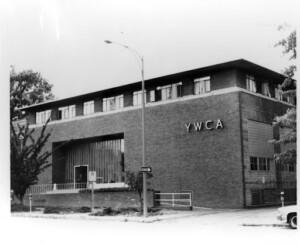YWCA: Celebrating 90 Years in Salem
1855 – – – First YWCA founded in England as nurses – the first time women had served on the front – return from the Crimean War. At the same time, the Industrial Revolution sees women flocking to the cities from farms to find employment. Cities are not friendly places for young women alone – they need housing and other services.
1858 – – – The movement for women to associate spreads over the Atlantic, and the first Association in the United States – Ladies Christian Association – forms in New York City.
1860 – – – Twenty-one students, teachers, and needlewomen occupy the first YWCA residence in New York City. The YWCA takes on issues such as long work hours, poor ventilation, lack of rest periods, and unsafe surroundings in factories.
1864 – – – The first day care center in the United States is organized by the Philadelphia YWCA.
1860s – – – Concerns for women’s health in the city environment prompts Boston YWCA to start gyms and swimming pools.
1873 – – – The first student YWCA started at Normal University in Normal, Illinois.
1900 – – – A small group of women in Salem, Oregon, headed by Miss Nina McNary, organized the “City YWCA,” holding Bible and Mission study classes, domestic science, employment work, and swimming and gymnasium classes at the already-established YMCA.
1914 – – – In Salem, need for the work of the Association becomes so great that over 400 women organize into a legitimate National Young Women’s Christian Association on April 7th. Their mission includes traveler’s aid work, rural work, and student work, including working with the established Willamette University and city high school groups.
1916-17 – – – The YWCA has a permanent downtown home above the new Roth’s Grocery Store. It includes eight sleeping rooms, including one for the housemother, restrooms, and meeting rooms.
1913-1920 – – – Nationally, the YWCA creates a Commission on Sex Education, holds the first interracial conference in the South, finances the first International Conference of Women Physicians, and represents 30,000 YWCA industrial members in urging passage of an 8-hour work law, prohibition of night work, and the right of labor to organize.
1939 – – – The YWCA purchases the Roberts home at 768 State Street, and it becomes the YWCA headquarters.
1942 – – – The YWCA extends its services and personnel to Japanese women and girls in ten relocation centers.
1950s-1960s – – – There are seven Y-teen groups in Salem involving over 2,000 teen girls.
1953 – – – “Shall we have a car wash or a dance?” ponders a Y-teen group–the result is the first SnoBall Dance celebrating its 50th successful year in December of 2003.
1954 – – – In 1953, the Roberts home is demolished and the current building, designed by Pietro Belluschi, is built on the same site.
1960 – – – The Salem YWCA swimming pool is completed.
1967 – – – The Salem YWCA sees the need for teen parents to develop into socially mature and economically self-supporting citizens and, under some controversy, begins the Teen Parent Program, offering education, child care, and parenting classes for both mothers and fathers.
1971 – – – The Carnegie Library building next door is purchased for $150,000 and transformed into the youth wing.
1973 — After the end of the Vietnam War, the YWCA started a program to deal with the problems of refugees.
1979 – – – As Vietnamese refugees arrive in Salem in large numbers, the YWCA implements programs in cultural integration, employment, secondary wage-earner projects, case management, and other programs to help them assimilate into their new environment.
1982 – – – The YWCA receives the Salem Human Rights Award for its work with Southeast Asian refugees and, in 1983, receives the Distinguished Volunteer Award from the U.S. Department of Health and Human Services.
1987 – – – The Teen Parent Program receives the National Organization on Adolescent Pregnancy and Parenting’s Annual Meritorious Service Award, a comprehensive single-site model emulated throughout the country.
1989 – – – On May 27th, the YWCA in conjunction with Willamette University, held the first Cultural Diversity Conference on the Willamette campus to help raise awareness of–and promote sensitivity–about equality, racial justice, violence against women, hate crimes, and affirmative action.
1992 – – -ENCOREplus Tell a Friend Project was started as a community-based intervention to increase breast cancer early detection behaviors in medically underserved women and refer them for mammograms and clinical breast exams. Free to women between the ages of 40 and 64, who have limited or no insurance. The YWCA also provides self breast exam education and training.
2003 – – – With rising maintenance and utility costs in buildings 90- and 50-years-old, the YWCA sells 768 State Street to Willamette University and looks to the future as it studies which programs and services should be carried for-ward to a new location. The YWCA began a new partnership with Gilbert House in offering girls in the third to fifth grades an opportunity to participate in after-school science, math, and a related technology program.
2004 – – – Seven YWCA case managers operate programs with Hispanic, Russian, other immigrants, and homeless people to help with housing, employment, medical, and other assistance. The swimming pool is closed. April 20th, the YWCA celebrated its 90th year.
Written by Carol Green, Executive Director, Salem YWCA
Bibliography:
Spring (March-May), 2004, YWCA of Salem Newsletter, Pgs 4 & 5, 768 State Street, Salem, OR 97301
This article originally appeared on the original Salem Online History site and has not been updated since 2006.








Leave A Comment